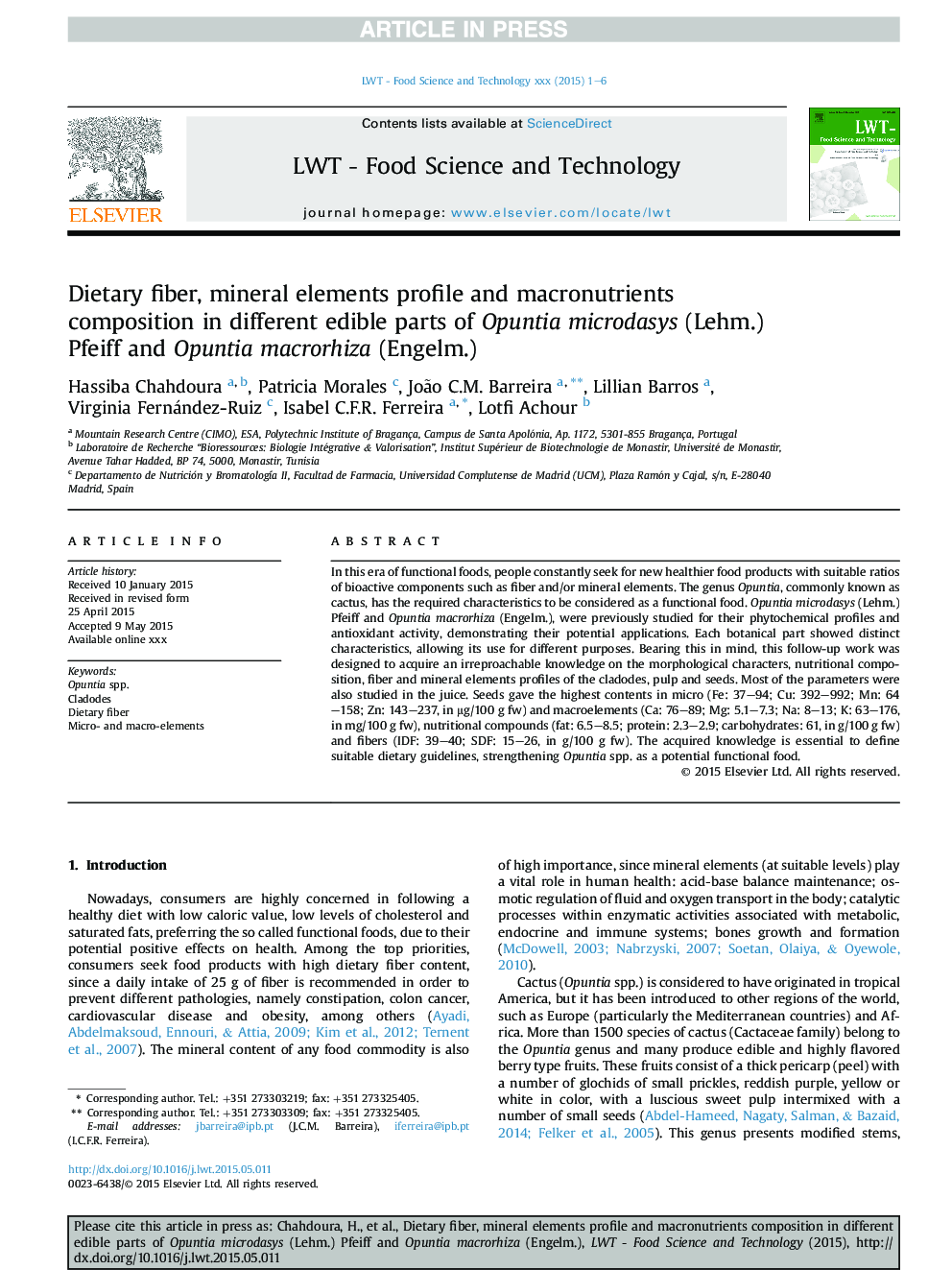| Article ID | Journal | Published Year | Pages | File Type |
|---|---|---|---|---|
| 6400825 | LWT - Food Science and Technology | 2015 | 6 Pages |
Abstract
In this era of functional foods, people constantly seek for new healthier food products with suitable ratios of bioactive components such as fiber and/or mineral elements. The genus Opuntia, commonly known as cactus, has the required characteristics to be considered as a functional food. Opuntia microdasys (Lehm.) Pfeiff and Opuntia macrorhiza (Engelm.), were previously studied for their phytochemical profiles and antioxidant activity, demonstrating their potential applications. Each botanical part showed distinct characteristics, allowing its use for different purposes. Bearing this in mind, this follow-up work was designed to acquire an irreproachable knowledge on the morphological characters, nutritional composition, fiber and mineral elements profiles of the cladodes, pulp and seeds. Most of the parameters were also studied in the juice. Seeds gave the highest contents in micro (Fe: 37-94; Cu: 392-992; Mn: 64-158; Zn: 143-237, in μg/100 g fw) and macroelements (Ca: 76-89; Mg: 5.1-7.3; Na: 8-13; K: 63-176, in mg/100 g fw), nutritional compounds (fat: 6.5-8.5; protein: 2.3-2.9; carbohydrates: 61, in g/100 g fw) and fibers (IDF: 39-40; SDF: 15-26, in g/100 g fw). The acquired knowledge is essential to define suitable dietary guidelines, strengthening Opuntia spp. as a potential functional food.
Keywords
Related Topics
Life Sciences
Agricultural and Biological Sciences
Food Science
Authors
Hassiba Chahdoura, Patricia Morales, João C.M. Barreira, Lillian Barros, Virginia Fernández-Ruiz, Isabel C.F.R. Ferreira, Lotfi Achour,
